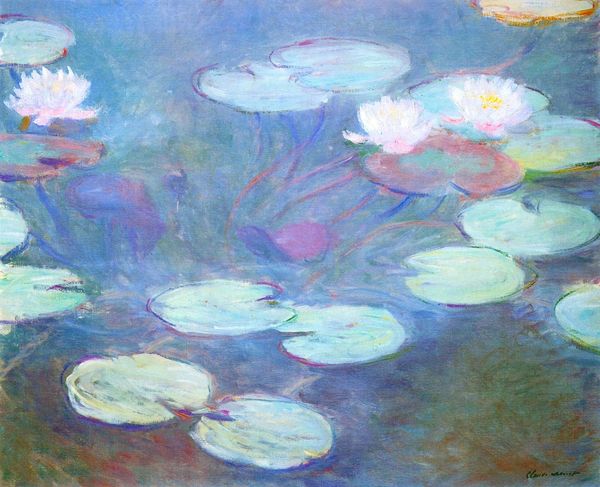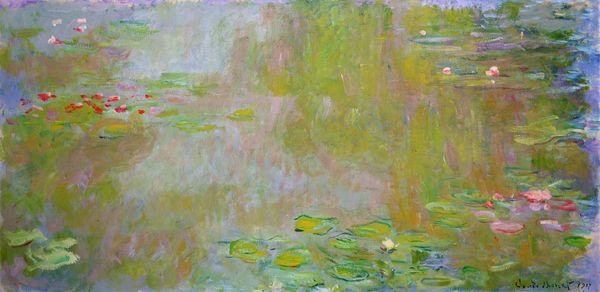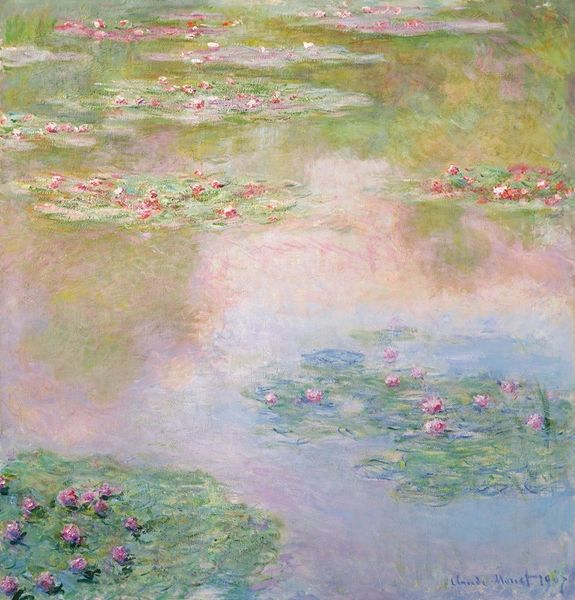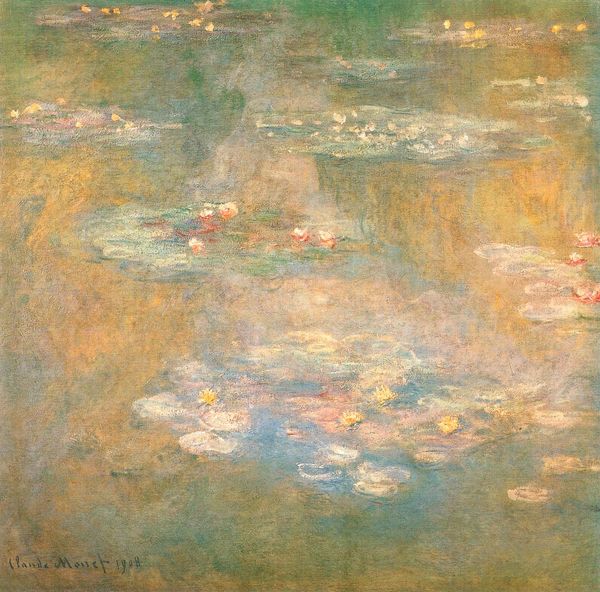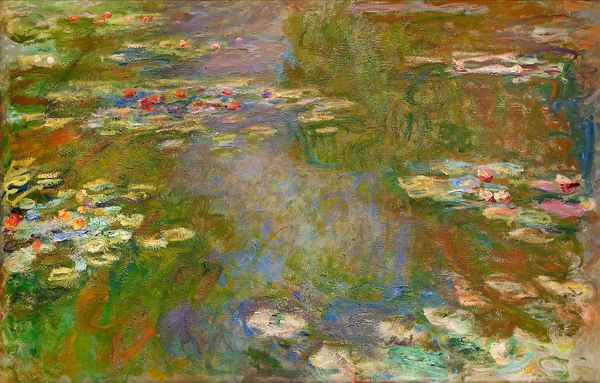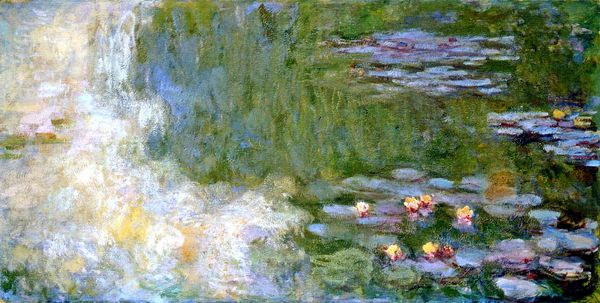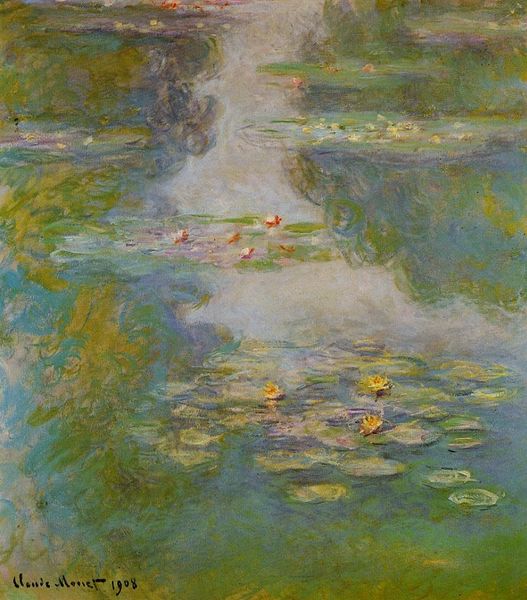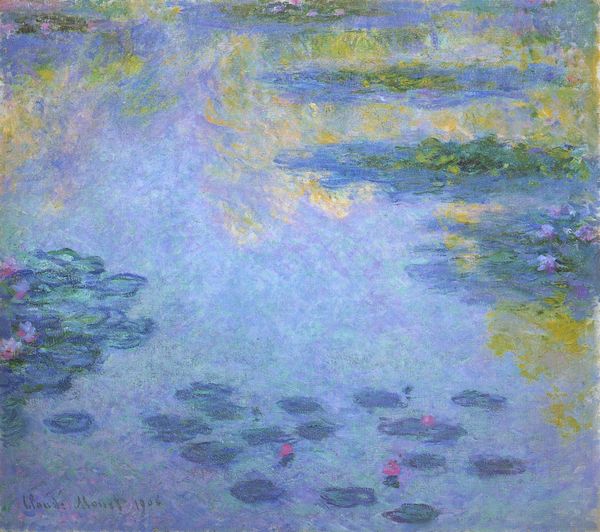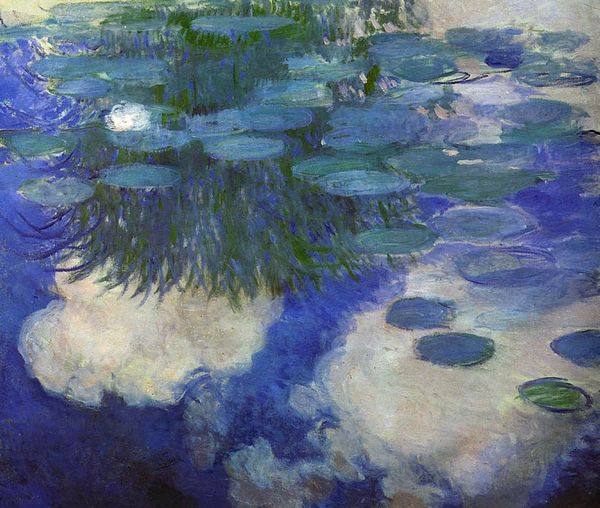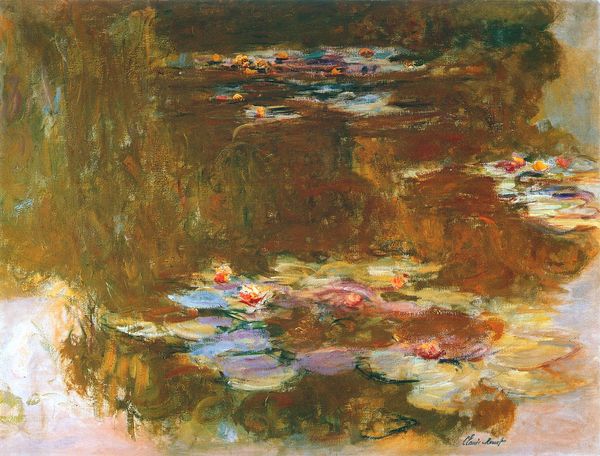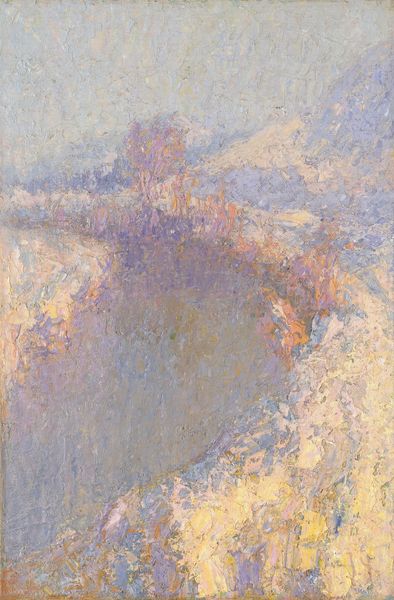
Copyright: Public domain
Editor: Here we have Claude Monet's "Water Lilies," painted in 1908, using oil on canvas. The colors create such a hazy, dreamlike effect... How do you interpret this work? Curator: This work invites us to consider the role of nature and perception in shaping social consciousness. Monet painted these en plein air, right? We need to reflect on how industrialization was impacting the environment at the time and how Monet's intense focus on capturing the ephemeral qualities of light and water becomes, in a way, a political act. Editor: Political? I hadn't thought about it that way. Curator: Absolutely. By emphasizing the beauty and fragility of the natural world, Monet subtly critiques the destructive tendencies of capitalist expansion. The paintings capture fleeting moments, which subtly challenge our modern obsession with speed and constant production. What do you think about the gendered aspect of landscapes? Editor: Oh, interesting! I suppose landscape painting, especially then, was considered traditionally masculine... Curator: Precisely! Monet, by focusing on a domestic space, his own garden, disrupts the traditional masculine gaze associated with landscape. Also, what colors do you see in the lily pads themselves? Editor: I see pink, green, some blue...it is truly stunning. Curator: Note that use of those colors disrupts conventional ways of seeing nature. These artistic choices can subtly subvert traditional power dynamics. Editor: That's given me a lot to consider when I look at Impressionism now! Thanks! Curator: My pleasure! Art offers pathways to broader reflections.
Comments
No comments
Be the first to comment and join the conversation on the ultimate creative platform.
